As a seasoned traveler with a passion for exploring cultural and historical treasures, I am Michael Zhang. Over the years, I’ve uncovered countless stories behind the world’s art and history, sharing them with curious minds like yours. Today, I’m delighted to introduce you to the Shanghai Museum, a global beacon of Chinese art and culture. Whether you’re a history aficionado or visiting for the first time, this guide will help you explore its rich offerings and plan your visit effectively.
Introduction to the Shanghai Museum
The Shanghai Museum is one of the world’s most renowned institutions for ancient Chinese art. Established in 1952, its origins can be traced back to the founding of the Shanghai branch of the Asiatic Society in 1874. As a leading national museum, it boasts over 1.02 million artifacts, with 145,000 rare treasures spanning 33 categories, including bronzes, ceramics, paintings, and calligraphy. Its collection reflects the depth and diversity of China’s cultural heritage, making it one of the most comprehensive museums globally.
The museum operates two locations:
- Shanghai Museum on People’s Square: Located at 201 Renmin Avenue, Huangpu District, accessible via the south gate on Wusheng Road.
- Shanghai Museum East: Situated at 1952 Century Avenue, Pudong New Area, and opening in 2024.
Visiting Information
- Hours:
- People’s Square: 9:00 AM–5:00 PM (last admission at 4:00 PM), closed on Mondays (reservations required via WeChat).
- East Pavilion: 10:00 AM–6:00 PM (last admission at 5:00 PM), closed on Tuesdays (no reservations needed).
- Recommended Visit Duration: 3–4 hours.
- Best Season to Visit: Open year-round.
- Admission: Free for general exhibits; special exhibitions may have a fee.
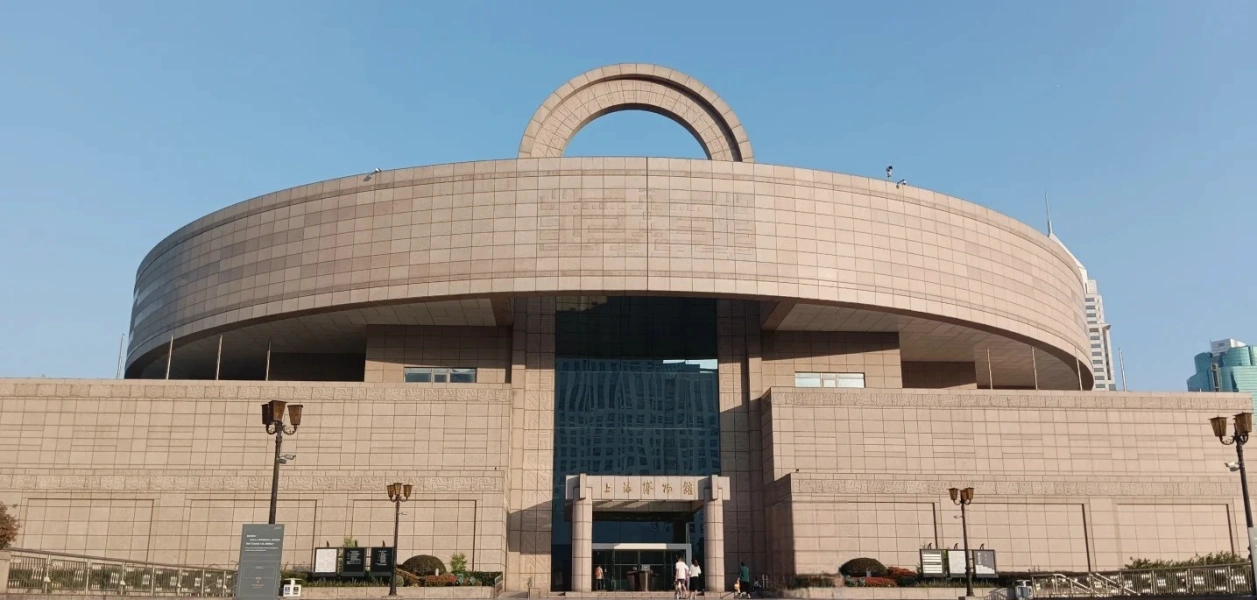
The Logo of the Shanghai Museum
The Shanghai Museum’s logo reflects the essence of its identity. Inspired by the tripod-like structure of the People’s Square building and the museum’s iconic artifact, the “Da Ke Ding” (Great Ke Tripod), the logo merges tradition with modernity. Additionally, it incorporates the initials “H” (for Hai, as in Shanghai) and “M” (for Museum), symbolizing its regional roots and global outlook. Its sleek design, infused with traditional Chinese patterns, embodies the museum’s cultural richness and international relevance.
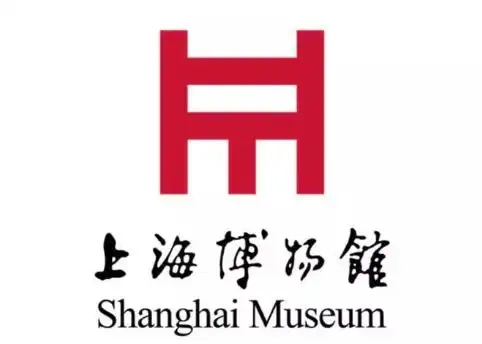
Why Visit the Shanghai Museum?
Shanghai Museum on People’s Square
Rich and Diverse Exhibitions
The People’s Square location offers a vast array of exhibits, featuring bronzes, ceramics, jades, coins, paintings, calligraphy, seals, sculptures, ethnic crafts, and Ming and Qing furniture. Highlighted artifacts such as the Cloisonné Enamel Vase with Animal Patterns and the Winged Lion Gold Coin showcase the diversity and richness of ancient Chinese culture.
Historical Significance and Architectural Charm
Since its grand opening in 1996, this venue has hosted significant exhibitions, including the “Treasures of Jin, Tang, Song, and Yuan Dynasties.” Its architectural design, blending traditional elements with modern aesthetics, has made it an iconic cultural landmark in Shanghai.
Shanghai Museum East
Outstanding Design and Layout
The East Pavilion, located near cultural landmarks such as the Shanghai Science and Technology Museum, features an impressive 120,000-square-meter space with 20 exhibition halls. The design combines elegance and innovation, including specialized areas like the Heritage Conservation Hall, enhancing the visitor experience.
Comprehensive and Valuable Collections
Exhibitions at the East Pavilion cover bronzes, sculptures, ceramics, coins, and more. These displays collectively serve as a “visual textbook” of ancient Chinese art, offering visitors a deeper understanding of the nation’s cultural achievements.
Interactive and Engaging Experience
More than a museum, the East Pavilion is a space for exploration and interaction. Its open design and innovative exhibits invite visitors to immerse themselves in history and connect with the stories behind the artifacts.
Things to Do in the Shanghai Museum
Key Attractions
Shanghai Museum on People’s Square
The Shanghai Museum on People’s Square offers a rich variety of exhibits across its four floors, each showcasing different aspects of ancient Chinese art and culture:
- First Floor: Ancient Chinese Bronze Gallery, Ancient Chinese Sculpture Gallery, and Exhibition Hall.
- Second Floor: Ancient Chinese Ceramics Gallery, Zande Lou Ceramics Gallery, and Exhibition Hall.
- Third Floor: Galleries for Chinese Calligraphy, Chinese Painting, and Chinese Seals.
- Fourth Floor: Galleries for Ancient Chinese Jade, Chinese Coins, Ming and Qing Furniture, Ethnic Crafts, and Exhibition Hall.
Here are some must-visit galleries:
Ancient Chinese Bronze Gallery
This gallery features bronze artifacts from the Xia, Shang, Zhou, and Warring States periods, including ritual vessels, musical instruments, and weapons. These masterpieces highlight the advanced metallurgical and casting techniques of ancient China. The Da Ke Ding tripod, one of the museum’s treasures, captivates visitors with its intricate patterns and inscriptions, narrating the glory of ancient Chinese civilization.
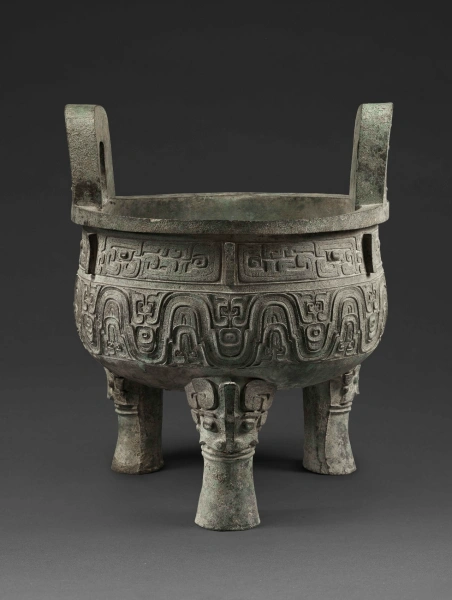
Ancient Chinese Ceramics Gallery
The ceramics gallery houses a collection of exquisite ceramic pieces ranging from the Neolithic period to the Qing Dynasty. Visitors can admire iconic works such as Tang Dynasty tri-colored glazed pottery, Song Dynasty ceramics from the Five Great Kilns, and Ming and Qing Dynasty blue-and-white porcelain. These artifacts illustrate the evolution of Chinese ceramic artistry and its unparalleled craftsmanship.
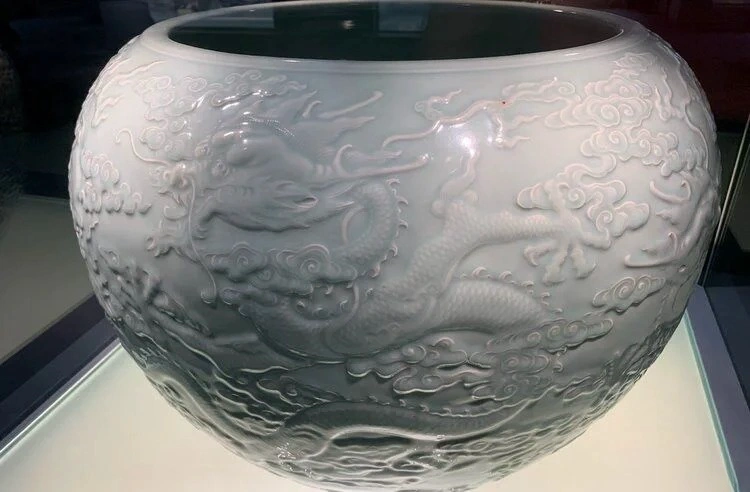
Gallery of Chinese Painting Through the Ages
This gallery is a treasure trove of ancient Chinese paintings, showcasing genres like Tang Dynasty figure paintings, Song Dynasty landscapes, and Ming and Qing Dynasty floral and bird illustrations. Each piece reflects exceptional skill and offers profound insights into the artistic achievements and historical significance of Chinese painting.
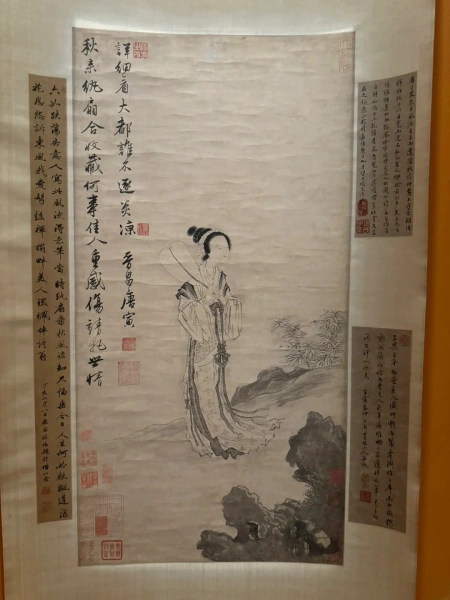
Ancient Chinese Jade Gallery
The jade gallery displays exquisite artifacts from the Neolithic period to the Qing Dynasty, including ceremonial vessels, decorative items, and practical tools. From finely crafted jade pendants to stately ritual objects, every piece conveys the cultural importance of jade in traditional Chinese society and its deep spiritual significance.
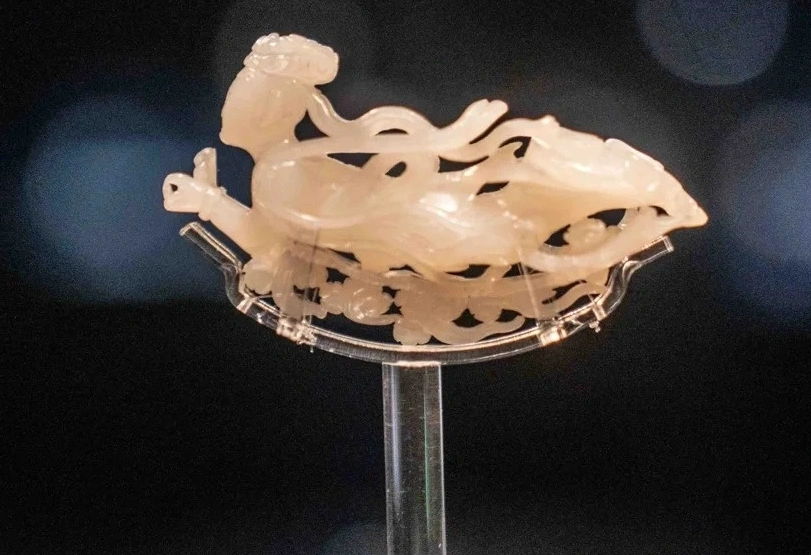
Shanghai Museum East
Shanghai Museum East features eight permanent galleries, each dedicated to a specific category of Chinese art: bronzes, calligraphy, paintings, seals, ceramics, coins, sculptures, and jade. Here are a few highlights:
Bronze Gallery
The Bronze Gallery traces the development of ancient Chinese bronze artifacts, ranging from ceremonial vessels to musical instruments and weapons. These exhibits not only highlight the artistic elegance of bronze craftsmanship but also vividly depict the ritualistic and societal structures of ancient China.
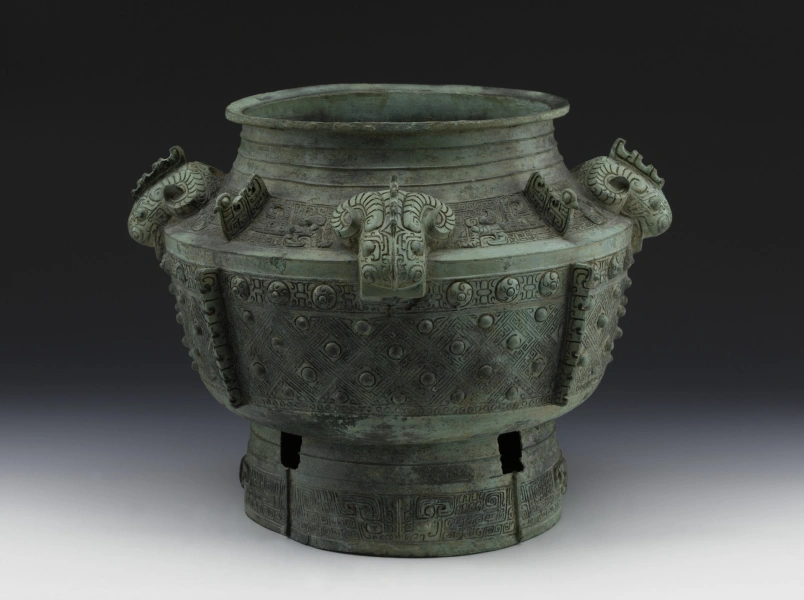
Calligraphy Gallery
The Calligraphy Gallery celebrates the history and artistry of Chinese calligraphy, presenting masterpieces from the Han to Qing dynasties. Visitors can explore various styles, including cursive, regular, and seal scripts. Highlights include a reproduction of Wang Xizhi’s “Preface to the Orchid Pavilion”, which showcases the unparalleled beauty and cultural depth of Chinese calligraphy.
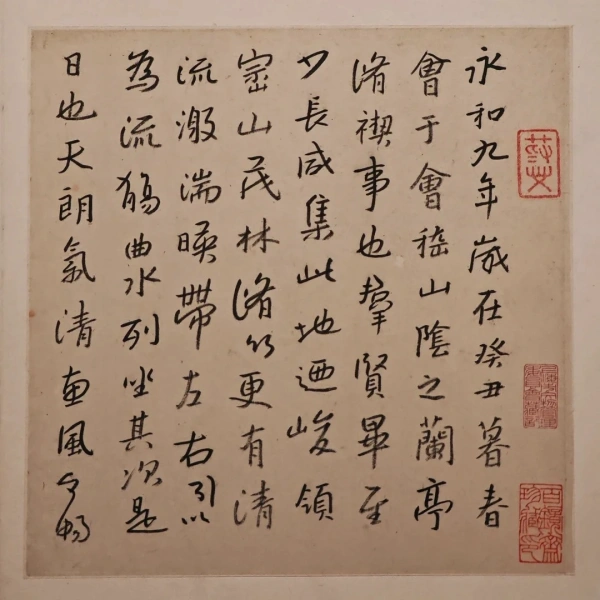
Ceramics Gallery
This gallery offers a comprehensive view of the development of Chinese ceramics. Featured pieces include Tang Dynasty tri-colored pottery, Song Dynasty ceramics from the Five Great Kilns, and the iconic blue-and-white porcelain of the Ming and Qing dynasties. These treasures demonstrate the technological advancements and artistic aesthetics across different historical periods.
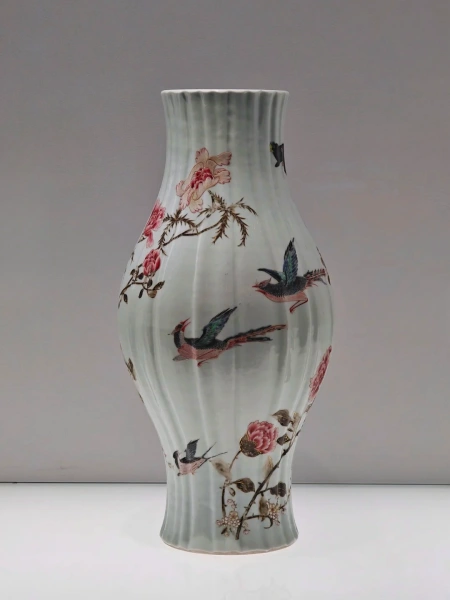
Jade Gallery
The Jade Gallery focuses on the cultural heritage of jade, exhibiting pieces from the Neolithic period to the Qing Dynasty. The collection includes ceremonial artifacts, jade ornaments, and decorative items, each showcasing the exquisite craftsmanship of ancient artisans. Interactive exhibits in the East Pavilion provide a unique opportunity to delve deeper into the fascinating world of Chinese jade culture.
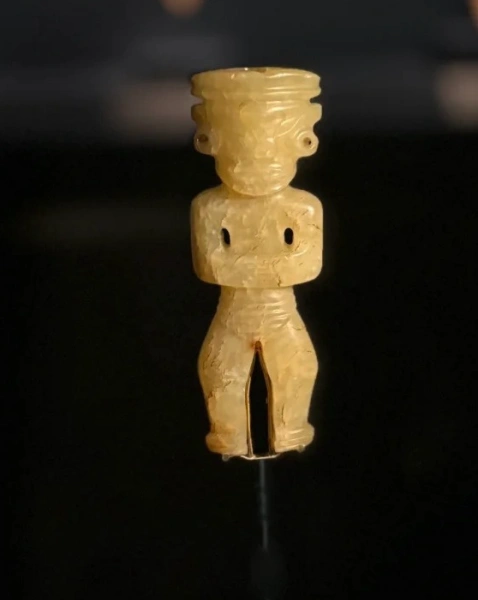
Shanghai Museum Ticket Guide
Shanghai Museum Ticket Prices
General Exhibitions
- Shanghai Museum on People’s Square: Free admission. Reservations are required via the WeChat app or the official website. If reservations are unavailable, you can consider purchasing tickets for special exhibitions to gain entry.
- Shanghai Museum East: Free admission with no reservations needed.
Opening Hours:
- People’s Square: 9:00 AM–5:00 PM (last admission at 4:00 PM), closed on Mondays.
- East Pavilion: 10:00 AM–6:00 PM (last admission at 5:00 PM), closed on Tuesdays.
Special Exhibitions
- Shanghai Museum on People’s Square: Ticket prices for special exhibitions vary by exhibit, typically ranging from 100 to 150 RMB per adult. Tickets can be purchased onsite but sell out quickly, so booking in advance via the official website or online travel platforms is recommended.
- Shanghai Museum East: Special exhibition tickets are also priced between 100 and 150 RMB per adult. These tickets can be purchased onsite or through the official website. Advance booking is highly recommended due to high demand.
Opening Hours: Same as general exhibitions.
Shanghai Museum Audio Guide
The Shanghai Museum offers audio guides in multiple languages, including Chinese, English, French, Japanese, German, Korean, Spanish, and Italian.
- Chinese: Adult sets cost 20 RMB each. Family sets are available for 20 RMB, and children’s sets for 10 RMB. No deposit is required, but you’ll need to provide your phone number and ID.
- Other Languages: The rental fee is 40 RMB per set, with a deposit of 400 RMB or $50, or a passport as collateral.
How to Get to the Shanghai Museum from Downtown Shanghai
By Metro
To Shanghai Museum on People’s Square
Take Metro Line 1, 2, or 8 to People’s Square Station. Exit from Exit 1, and the museum entrance is just a two-minute walk away.
To Shanghai Museum East
- Take Metro Line 2 to Shanghai Science and Technology Museum Station and exit from Exit 8.
- Take Metro Line 4 to Pudian Road Station and exit from Exit 2.
- Take Metro Line 6 to Pudian Road Station and exit from Exit 1.
By Bus
To Shanghai Museum on People’s Square
The following bus routes stop at People’s Square Station: 18, 23, 42, 46, 49, 71, 71 Express, 108, 108 Express, 112, 112 Express, 123, 145, and 167. From the station, the museum is just a short walk away.
To Shanghai Museum East
The following bus routes serve nearby stops:
- Bus 638/975: Get off at Yanggao South Road, Century Avenue.
- Bus 987/Pudong 36: Get off at Century Avenue, Dingxiang Road.
- Bus Pudong 106: Get off at Pudian Road, Zhulin Road.
- Lujiazui Financial City Bus Line 4: Get off at Yanggao South Road, Eshan Road.
- Bus 736: Get off at Pudian Road, Songlin Road.
- Bus 1069 (Loop Line): Get off at Pudian Road, Fushan Road.
- Bus Pudong 78: Get off at Jindai Road, Yingchun Road.
By Taxi or Ride-Hailing
To Shanghai Museum on People’s Square
- Location: 201 Renmin Avenue, Huangpu District, Shanghai.
- Time: Approximately 15–30 minutes from the city center.
- Cost: Around 20–40 RMB, depending on traffic conditions and the starting point.
To Shanghai Museum East
- Location: 1952 Century Avenue, Pudong New Area, Shanghai.
- Time: Approximately 20–40 minutes from the city center.
- Cost: Around 30–50 RMB, depending on traffic conditions and the starting point.
FAQ
Is the Shanghai Museum stroller-friendly?
Yes, the Shanghai Museum is highly accommodating for visitors with strollers. Both Shanghai Museum on People’s Square and Shanghai Museum East are equipped with elevators and accessible pathways, ensuring a smooth visit for families.
Where can I store my luggage?
Both the People’s Square location and the East Pavilion offer complimentary luggage storage services. Visit the information desk at either location to make arrangements.

 English (US)
English (US)  English (Hong Kong)
English (Hong Kong)  English (Malaysia)
English (Malaysia)  English (Singapore)
English (Singapore)  繁體中文
繁體中文 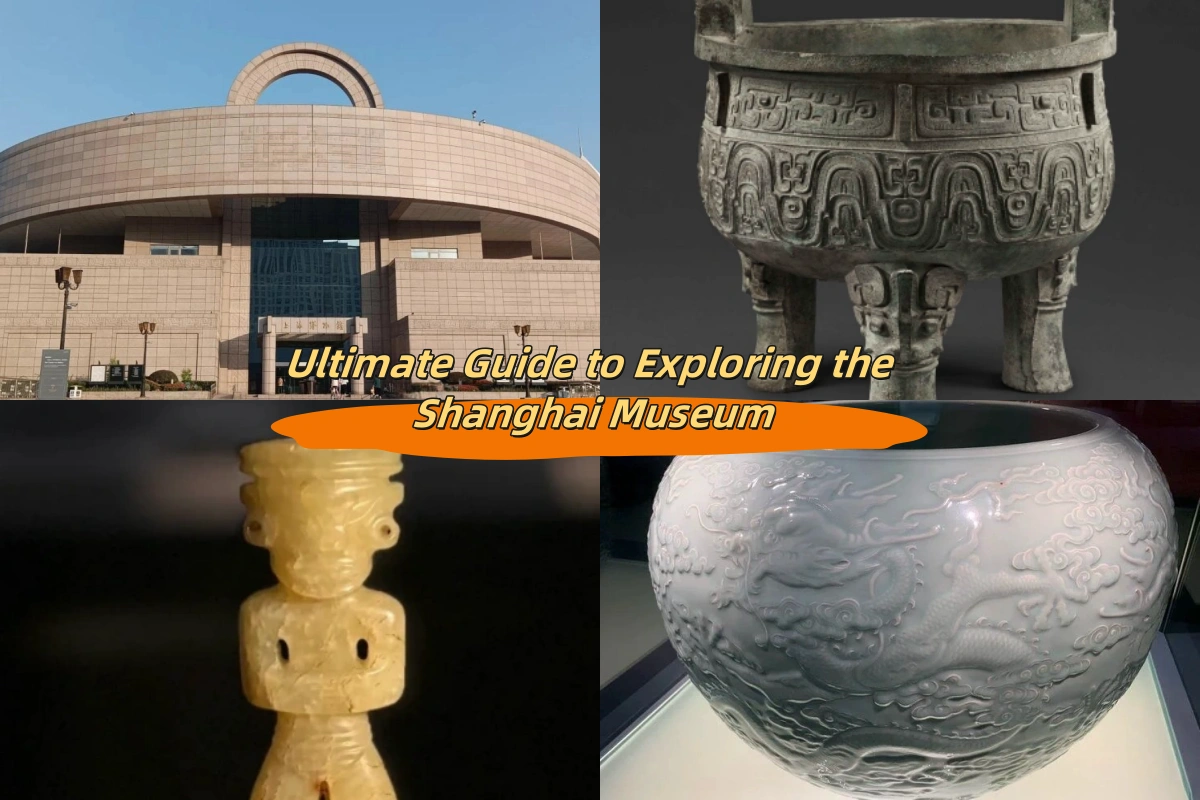
Comment (0)